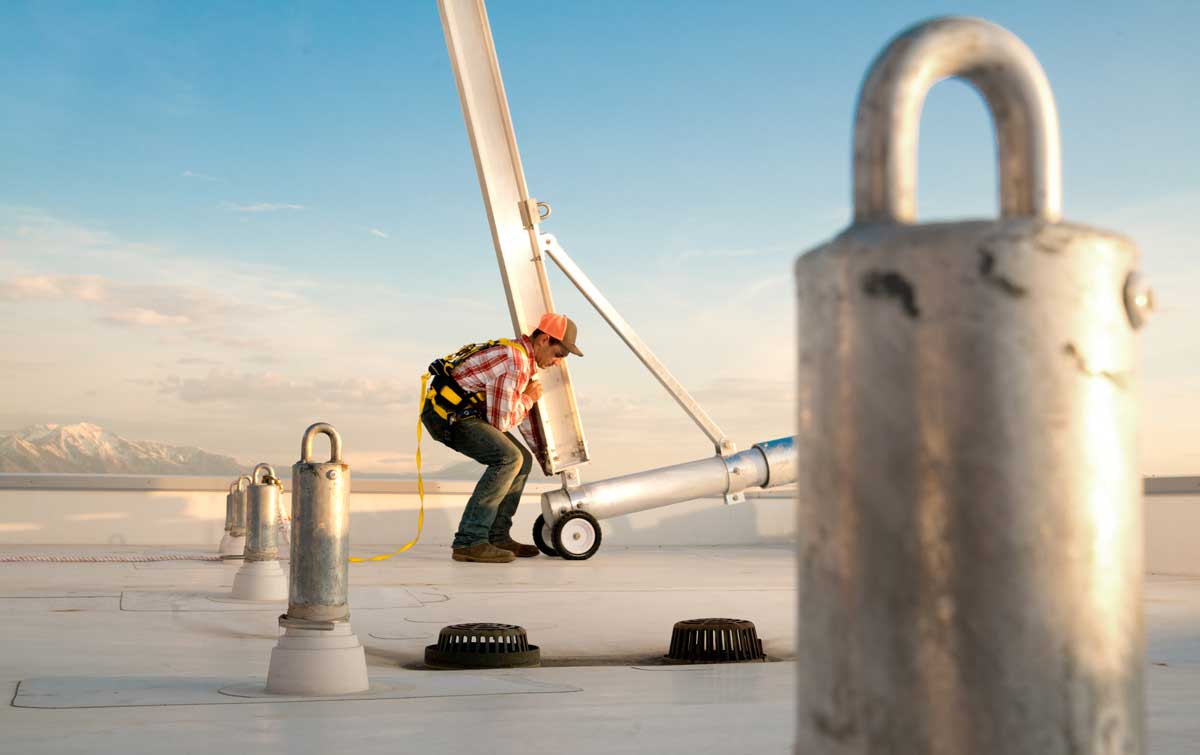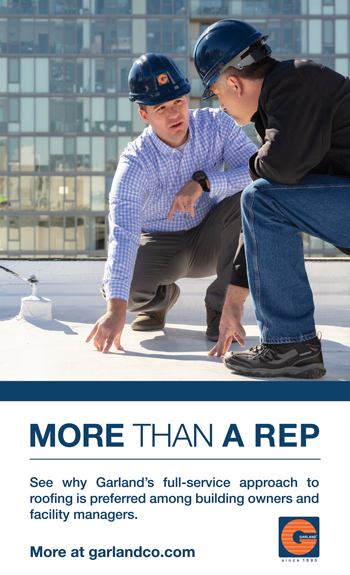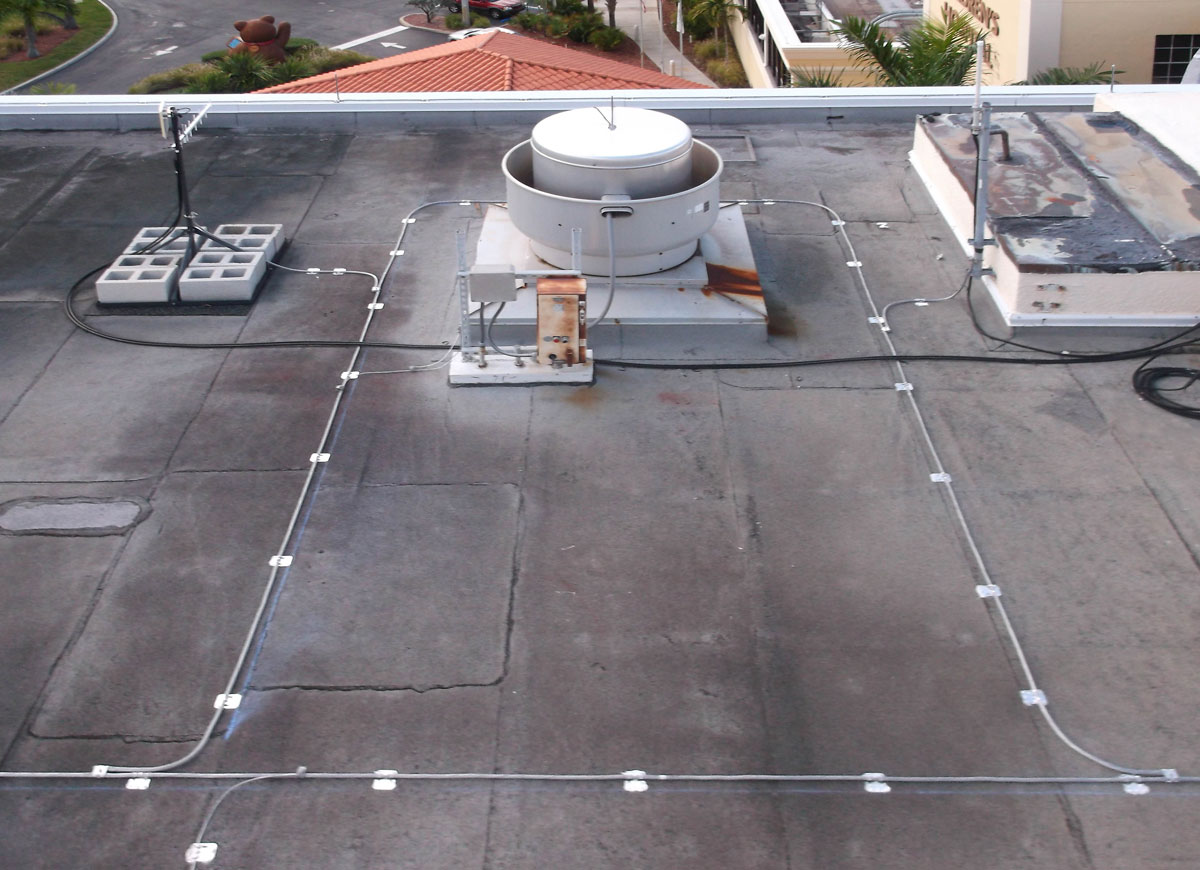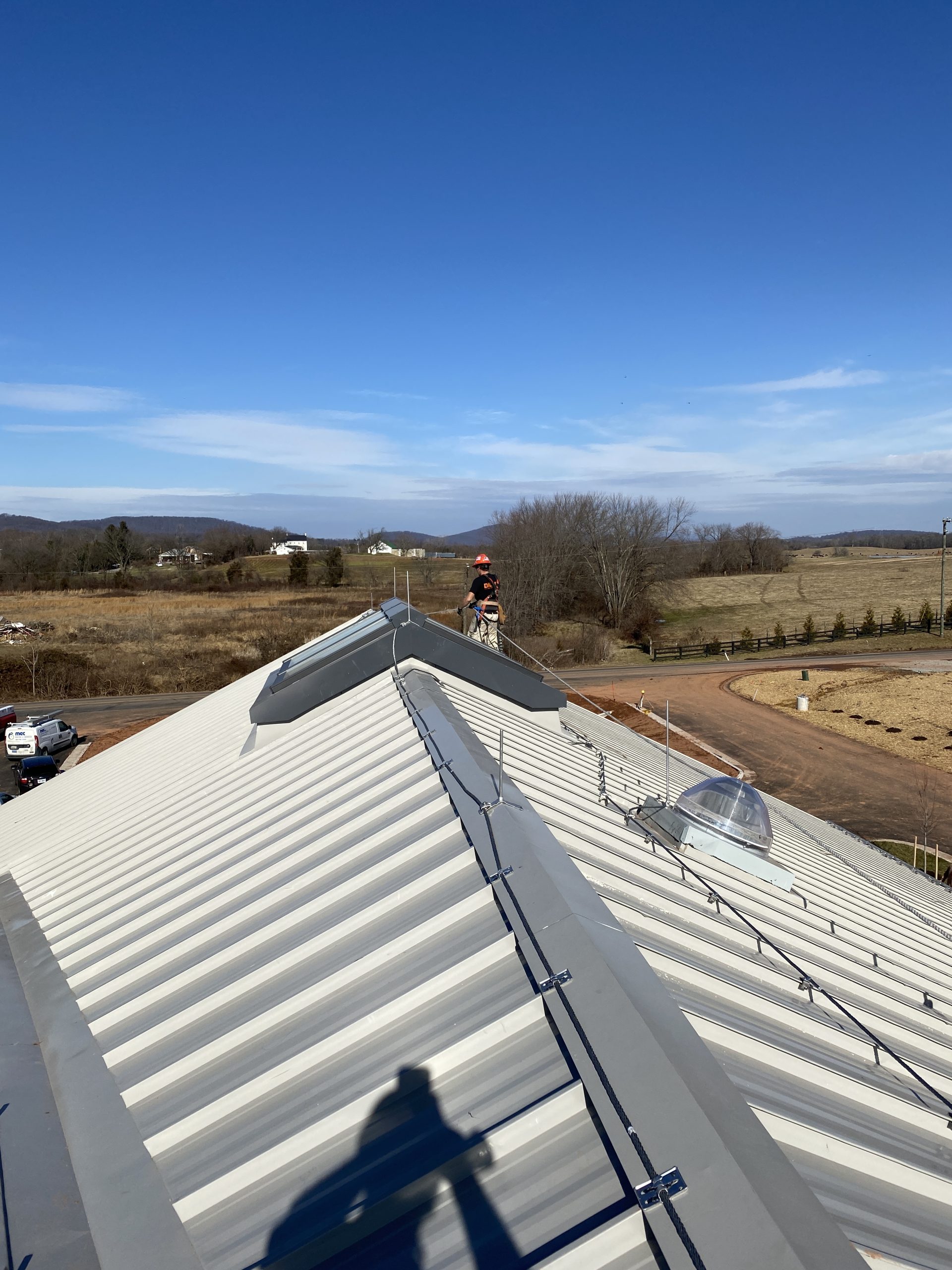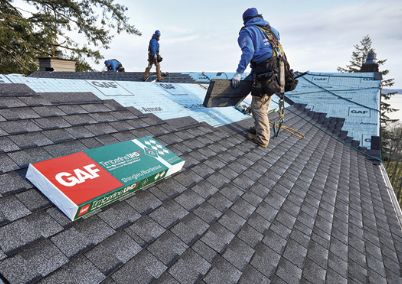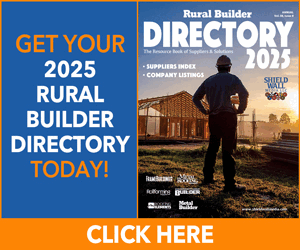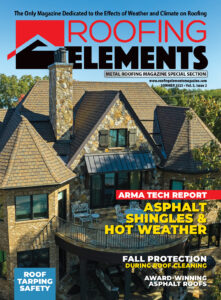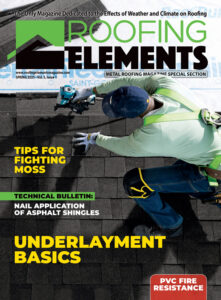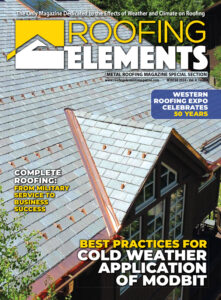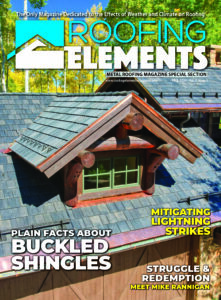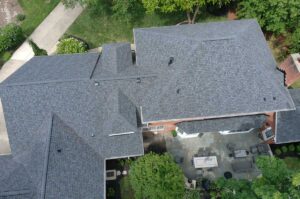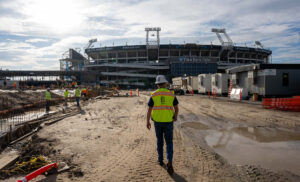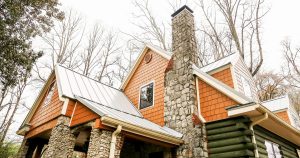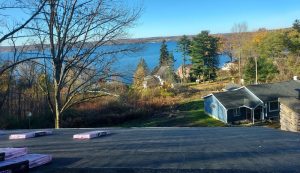Roof cleaning is necessary preventative maintenance for every building. Unfortunately, it exposes workers to one of the most dangerous hazards found in the workplace: falls from heights. Falls are the third leading cause of fatality in the general industry, and according to the U.S. Bureau of Labor Statistics (BLS), the number of fall fatalities has steadily increased since 2020. Additionally, failing to meet general fall protection requirements has been OSHA’s most cited violation for the past fourteen consecutive years.
However, much can be done to fight this problem and turn this trend around. This article will discuss OSHA’s minimum requirements for protecting workers on rooftops, which fall protection solutions are most effective, and how to determine which solution will best protect workers.
OSHA Fall Protection Requirements for Rooftop Workers
OSHA 1910.28 offers guidance for building owners and employers on what sort of fall protection is required for workers. Rooftop fall protection requirements are primarily determined by two factors: the frequency of the work performed and the proximity to the edge of the roof. (Note: these requirements apply to any walking working surface, but this article will continue referring to rooftops for conciseness.)
OSHA differentiates the frequency of work by infrequent and temporary and regular and routine. Infrequent and temporary work refers to tasks that last two hours or less. Some examples of this type of work include emergency maintenance, fall hazard assessments, or visual inspections. All other tasks are considered regular and routine, or jobs that are part of a daily, weekly, or regular schedule.
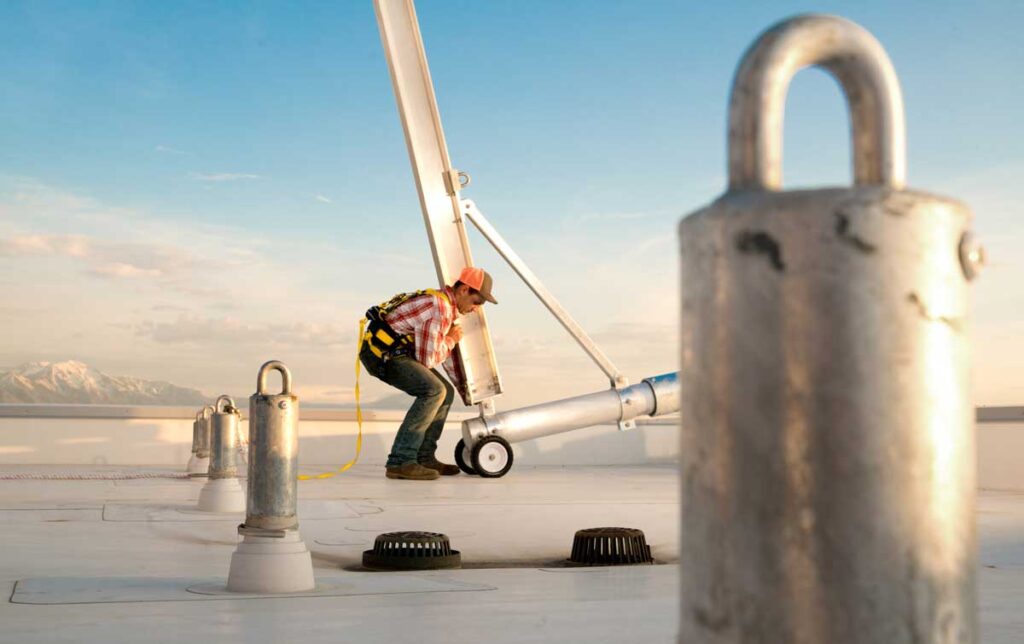
Personal fall arrest systems are the other form of active fall protection.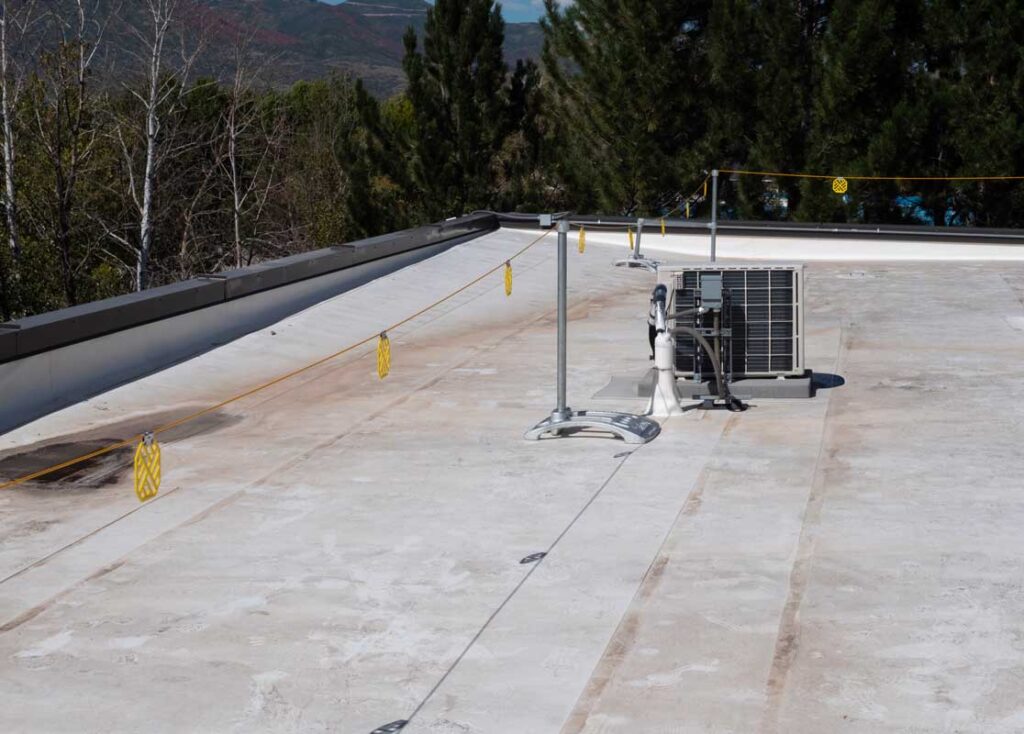
A warning-line fall protection system. Courtesy of Diversified Fall Protection.
A worker’s proximity to the roof’s edge is the other factor in determining what type of fall protection is required by OSHA. Regular and routine work performed within 15ft of the roof’s edge requires active or passive fall protection systems. There is an exception that allows Warning Line (see Graphic A) for infrequent and temporary work performed within 6 feet of the roof’s edge.
Less fall protection is required once workers are greater than 15 feet from the roof’s edge. At that distance, Warning Line is deemed acceptable for regular and routine work. At the same time, no fall protection is required for infrequent and temporary work as long as a safety monitor or other administrative controls are in place.
Selecting the Most Effective Fall Protection Solutions
As stated previously, regular and routine work performed within 15 feet of the roof’s edge will require active or passive fall protection systems. Understanding the difference between these solutions and their effectiveness can help determine the most feasible solution for your facility.
Passive fall protection systems are defined as systems requiring no user input to work. They are generally considered more effective than active fall protection systems as they are virtually impossible to misuse or for workers to neglect their use willingly. Guardrail is the most common example of a passive fall protection system. Its effectiveness lies in its simplicity. A building equipped with perimeter guardrail would eliminate almost every fall hazard along the roof’s edge. And suppose a building owner is concerned with penetrating roof membrane and the potential damage that could occur. In that case, there are many guardrail options now with non-penetrating ballasted plates that comply with OSHA guidelines.
Guardrail does not have to be installed entirely around the perimeter of the roof to be effective. Many organizations create strategic “corridors” comprised of guardrail as a physical barricade to control the navigation path of their workers during roof access. Even with guardrail present, workers should stay as far from the roof’s edge as possible.
Active fall protection systems are defined as systems that require active user input. These systems will require an anchorage, body harness, and connection device for each user required to use them. If possible, active fall restraint equipment should be used. An example is a fixed-length lanyard attached to an anchorage shorter than the distance from the anchorage to the roof’s edge. These systems help prevent a fall because workers cannot physically reach the roof’s edge, thus protecting them from the fall hazard. However, if a worker decides to disconnect from their anchor, not only would they be in violation of OSHA requirements, but they would be at risk of falling with no means of protection.
Personal fall arrest systems are the other form of active fall protection. However, it is important to acknowledge that fall arrest equipment is less effective in keeping workers safe from injury because they do not prevent a fall; it simply mitigates the injury incurred from falling. These also require an anchorage and body harness but utilize a shock-absorbing connection device, such as a lanyard or self-retracting lifeline (SRL). Lanyards and Class 1 SRLs are only permitted when the worker is provided with an overhead anchorage or an anchor point at least as high as the dorsal d-ring on their body harness. If the anchorage is located below the user’s dorsal d-ring or, more commonly, at their foot level, only a Class 2 SRL is permitted.
Foot-level anchorages should be avoided unless they are the only feasible option available. Falls that occur with foot-level anchorages, as opposed to overhead anchorages, are subject to increased freefall, generating greater fall forces. Class 2 SRLs are designed and tested to the latest ANSI Z359.14 standard and rated to absorb those additional forces. Standard shock-absorbing lanyards or Class 1 SRLs do not have the capability to absorb the user’s fall forces and simultaneously the additional forces incurred from encountering the roof’s edge. Class 2 SRLs contain an additional shock-pack located between the SRL block and the user’s snaphook connection specifically designed to absorb that additional force, preventing the lifeline from severing during fall arrest.
Conclusion
To recap, passive fall protection systems are more effective than active fall protection systems because they prevent users from being exposed to a fall, and don’t require them to be specially trained to be protected. Active fall restraint systems hold similar effectiveness but are more vulnerable to user neglect or misuse. Active fall arrest solutions are the least effective form of fall protection as they do not prevent a fall from occurring but are effective at mitigating anticipated injuries. However, if users fail to don their harness properly or are provided the incorrect connection device for their application, they can be subject to unanticipated injuries. With all pieces of fall protection equipment, it is essential for employers to train workers to follow the manufacturer’s instructions.
While safety leadership should be well-versed in OSHA minimum requirements to protect rooftop maintenance workers, staying current on regulatory updates, ANSI Z359 general consensus guidelines, and industry best practices can be challenging. It is always recommended to consult with fall protection equipment manufacturers, like Diversified Fall Protection, to ensure the latest technology is provided to workers to give them the best chance of working safely at heights.
Providing fall protection is a team effort where building owners, employers, frontline workers, vendors, and equipment manufacturers must work together to provide effective solutions for anyone performing elevated work. Together, we can prevent falls from occurring—and save lives.
Philip Jacklin is Continuing Education Program Manager for Diversified Fall Protection. He is an AIA continuing ed provider, QSSP certified, OSHA-30 trained, and has been a partner to the fall protection industry since 2018. Philip has a background in worker advocacy, team leadership, and fostering camaraderie among peers. He enjoys playing music, writing, and spending time in the sunshine with his family in Virginia Beach, VA.


